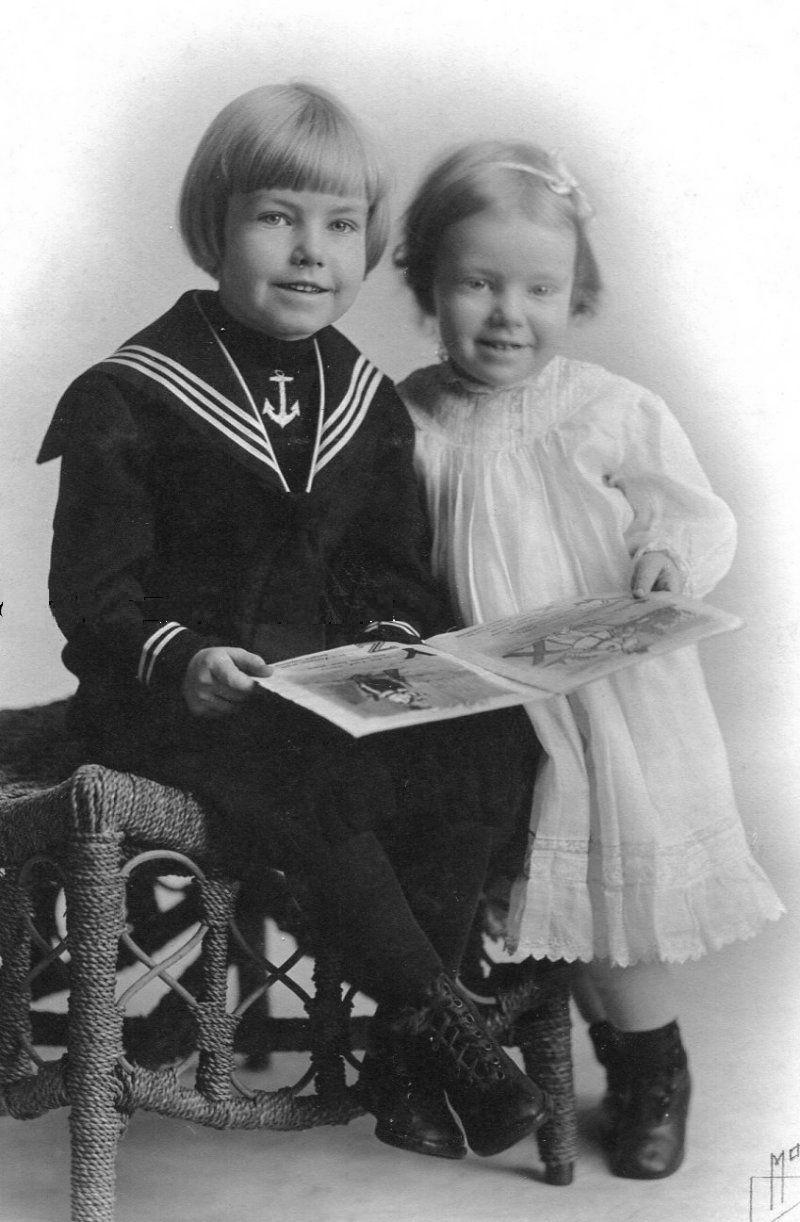

Figure 1.-- This matted portrait looks like one of the last type of mount styles used. We would date it to the late-1910s or early-20s. We see a brother ans sister aged about 2-5 years old. They are looking a picture book as they pose on a rattan stool. The little girl wears a delicate long dress and button shoes with a small hair bow. Her older brother wears a traditiona; three-stripe sailor suit and lace-up high tops. He also has classic Dutch boy bangs with the side hair covering his ears. The studio was Moody, but the location is not indicated.
|
|
American Page/Dutch Boy Cuts: Chronology--20th Century
The popularity of Dutch boy bangs varied substantially during the 20th century with two widely separated peaks of popularity. There were also stylistic differences over time dealing especially with the treatment and lngth of the side hair. We also
see differences in the geomeric shaping. Some cuts especilly in the 1910s-20s had very shhrp angles. Other had mor rounded angles. We suddently see substantial numbers of these cuts in the 1910s-20s. The decade styles are a little difficult to differentite because modt of the imges we have found are not dated. A good example here is Floyd Van Horne about 1915. One source suggests that the tyle was popularized for boys by by silent film child star Jackie Coogan. We see quite a number of boys this age with similar hair syles. Some times the hair was fuller. The style had declined in popularity by the 1930s, at least for boys. It had vecome atandard or firls. Rarely do we see classof girlsithout some sporting this style. And some school portraits seem to show virtually a class full of little Scouts. An unidentified school in the 1930s is a good example. The page boy style made a fashion come back (1950s). It became the height of fashion for women. And we see some boys with with very short bangs. President Kennedy's young son John-John also had a fashion impact for younger boys. The Beatles introduced it for boys and teenagers (1960s). And the hair at the side got longer as long hair styles became increasingly common. We notice this style reappearing for boys during the 1970s as long hair became stylish. We see some boys in the 70s and 80s with very full page/Dutch boy bangs with hair covering the ears, but not going much below it. They were also called Prince Valliant cuts, probably because of the comic strip and older boys did not like their cut referred to as a Dutch boy bangs. The cut was very similar to some of the styles girls and younger women were wearing, rather like the style popularized by Dorthy Hamlin when she was skating.
HBC

Navigate the Boys' Historical Clothing hair style pages:
[Return to the Main American page/Dutch boy cuts chonology age]
[Return to the Main American page/Dutch boy cuts page]
[Return to the Main American bangs style page]
[Return to the Main American bangs page]
[Return to the Main American hair page]
[Return to the Main page boy hair cut page]
[Return to the Main hair page]
[Long hair]
[Ringlet curls]
[Hair bows]
[Curls]
[Hats and caps]
[Collar bows]
Navigate the Boys' Historical Clothing Web Site:
[Introduction]
[Activities]
[Biographies]
[Chronology]
[Clothing styles]
[Countries]
[Bibliographies]
[Contributions]
[FAQs]
[Glossaries]
[Images]
[Links]
[Registration]
[Tools]
[Boys' Clothing Home]
Created: 9:59 PM 7/9/2016
Last edited: 9:59 PM 7/9/2016



